#campanian
Text

Two male and one female Pteranodon longiceps soar over the heads of a pair of Styxosaurus browni 85 million years ago in what is now the Niobrara Formation of Kansas
#paleoart#paleontology#pteranodon#pterosaur#plesiosaur#niobrara chalk formation#campanian#styxosaurus#cretaceous period#late cretaceous
435 notes
·
View notes
Text

I’m on a roll with the late cretaceous period. Say hi to the Gorgosaurus!
#paleoart#dino art#dinosaur#gorgosaurus#late cretaceous#campanian#tried to be accurate with the hexagonal scale pattern on the tale but idk how exactly that looked#stagart
160 notes
·
View notes
Photo
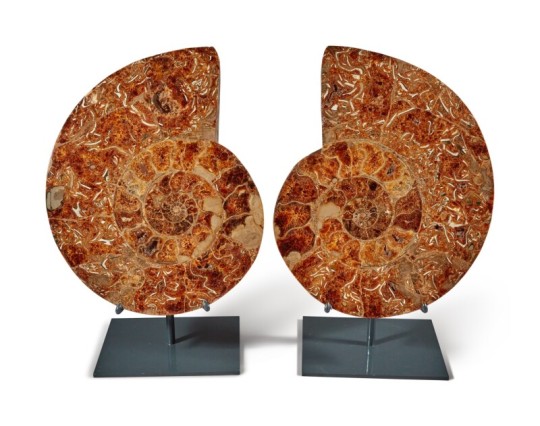

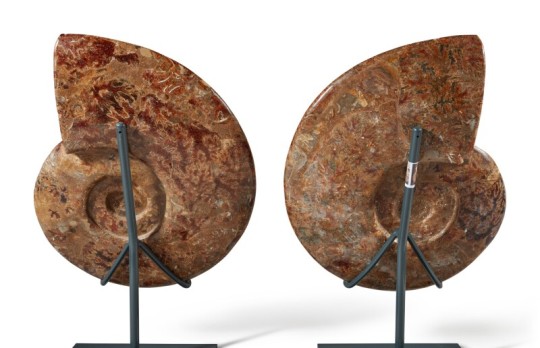
A Very Large Split Ammonite
Pachydiscus Cretaceous, Campanian
Belo Sur Tsiribihina, Madagascar
80 cm in diameter, split and polished, each half presented on a custom stand. A beautifully fossilized specimen of exceptional size, with honey-colored calcite and a few cavities with crystals.
Pachydiscus is an extinct genus of ammonite from the Upper Cretaceous with a global distribution. The species of this genus is P. neubergicus; in total, some 28 species have been described.
#A Very Large Split Ammonite#Pachydiscus Cretaceous#Campanian#Belo Sur Tsiribihina Madagascar#fossil#palaeontology#archeology#archeolgst#history#history news#ancient history
38 notes
·
View notes
Text


0 notes
Text
Time Travel Question 36: Prehistory (Iteration Unknown)
These Questions are the result of suggestions from the previous iteration.
Please add new suggestions below if you have them for future consideration. All cultures and time periods welcome.
#Time Travel#Prehistory#Paleontology#Dinosaurs#Perucetus#Pangea#Campanian Ignimbrite Supervolcano#The Ediacaran Period#Evolution#Extinct Animals#Diplodicus#Deinonychus#Acrocanthosaurus#The Glen Rose Trackway Hunt#Andrewsarchus
376 notes
·
View notes
Text
i found a fc for reina.............it's been 84 years
#leah.txt#i'm :0#i've had her for years and could never really find someone that fit... i'm 👀#like her nose is a tiny bit different and her skin is a lil darker but i mean mainly just cause she tans super easily (she's campanian &#sicilian ☺️) but i am like hulloooo lips are lichrally the perfect shape wtf and her jaw/cheek structure and eye and hair colour... even if#reina's hair is naturally curlier but she does straighten it a lot and style it in like loose waves. sometimes she#just lets it vibe but like. many thoughts going on there. (projects)#thank you to that lesbian brazilian show for popping up on my dash because i'm screeching . also yearning. but screeching
5 notes
·
View notes
Text
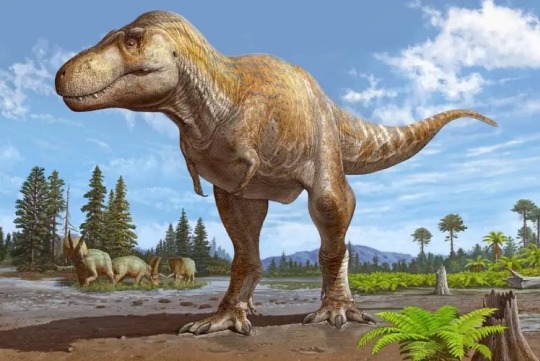
well, it seems a new Tyrannosaurus species was described today! the paper, (authored by Sebastian G. Dalman, Mark A. Loewen, and Nicholas R. Longrich) is based on remains from ancient Laramidia (now New Mexico) previously attributed to T. rex. These particular fossils are dated 6-7ish million years before T. rex. This newly proposed species, Tyrannosaurus mcraeensis, will hopefully give some insight into the evolution of T. rex, which has largely been shrouded in mystery.
The working theory has been migration from what is now Asia, *but* if T. mcraeensis continues to hold up to scrutiny it would turn out that the reverse is true! or even that a double back migration saw large tyrannosaurine dinosaurs migrate to Asia, only to migrate once again towards the northern part of North America!
Obviously the paper goes into far more detail, so i’ve included it below. give it a look!
(art at the top of the post was made by Sergey Krasovskiy)
#paleoart#dinosaurs#palaeoblr#dinosaur#paleontology#mesozoic#Tyrannosaurus mcraeensis#Tyrannosaurus rex#T rex
1K notes
·
View notes
Text

A Campanian Autumn
Parasaurolophus walkeri is distracted by falling leaves.
#illustration#paleoart#art#paleontology#paleo#sciart#artistsontumblr#digitalart#science#digitalillustration#parasaurolophus#fall#autumn#leaves#foliage#human artist
413 notes
·
View notes
Text

[Q: How could western North America support such a high diversity of ecologically similar, large-bodied horned dinosaur species during the late Campanian? A: It could not—or, the Red Queen takes an axe to a phylogenetic tree, restructuring an ecological network from within rather than without]
This is the title.
Berry (2023)
543 notes
·
View notes
Text
Jaculinykus yaruui Kubo et al., 2023 (new genus and species)
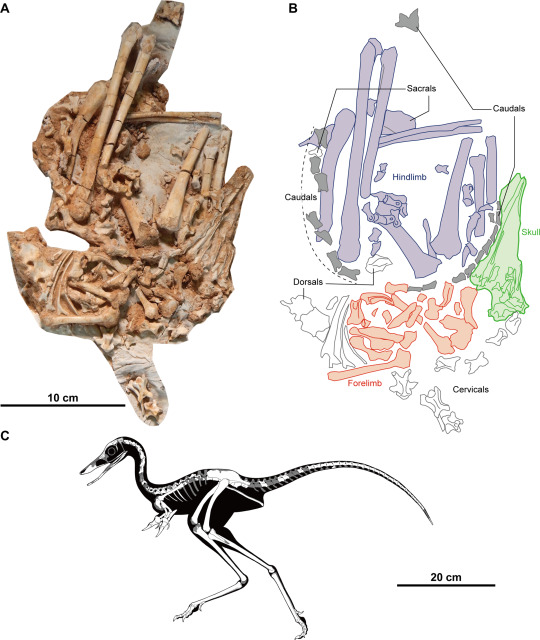
(Type specimen and schematic skeletal of Jaculinykus yaruui, with preserved bones in white on the skeletal, from Kubo et al., 2023)
Meaning of name: Jaculinykus = jaculus [small dragon in Greek mythology] claw [in Greek]; yaruui = speedy [in Mongolian]
Age: Late Cretaceous (Campanian–Maastrichtian?)
Where found: Barun Goyot Formation, Ömnögov, Mongolia
How much is known: Nearly complete skeleton of one individual.
Notes: Jaculinykus was an alvarezsaurid, a group of unusual small theropods with short but powerful forelimbs, each tipped with an enlarged thumb claw. Their other fingers were highly reduced, and in at least one case (Linhenykus), probably lost entirely. Jaculinykus appears to exhibit an intermediate stage in finger loss, having lost one of the smaller fingers on each hand. This makes it the first known example of an alvarezsaurid with two-fingered hands.
Jaculinykus is also one of the most completely known alvarezsaurids. Most of the bones in the type specimen have probably remained close to the original positions that they were held in when the dinosaur died, and they suggest that Jaculinykus slept in a very bird-like posture with the head turned back and tucked close to the body. A similar sleeping pose had previously been found in the troodontid theropods Sinornithoides and Mei, but Jaculinykus provides the first strong evidence that alvarezsaurids (which were more distant relatives of modern birds than troodontids) adopted the same behavior.
Reference: Kubo, K., Y. Kobayashi, T. Chinzorig, and K. Tsogtbaatar. 2023. A new alvarezsaurid dinosaur (Theropoda, Alvarezsauria) from the Upper Cretaceous Baruungoyot Formation of Mongolia provides insights for bird-like sleeping behavior in non-avian dinosaurs. PLoS ONE 18: e0293801. doi: 10.1371/journal.pone.0293801
366 notes
·
View notes
Text
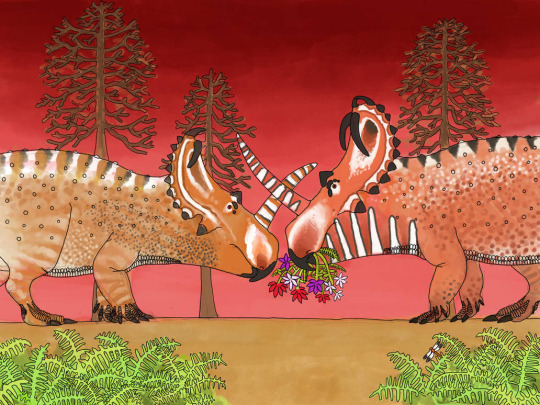
Love is in the Air: Centrosaurus Edition
A male Centrosaurus apertus offers a special gift of flowers to his mate 75 million years ago in what is now the Dinosaur Park Formation of Alberta, Canada.
#paleoart#dinosaur#dinosaurs#paleontology#valentines day#valentines gifts#valentine#centrosaurus#cerstopsian#ceratopsidae#campanian#dinosaur art#artists on tumblr#paleoartist#paleoartists on tumblr
185 notes
·
View notes
Text
MONDAY'S MOLLUSC: Parapuzosia
This is Parapuzosia seppenradensis, the largest known species of ammonite in the world.
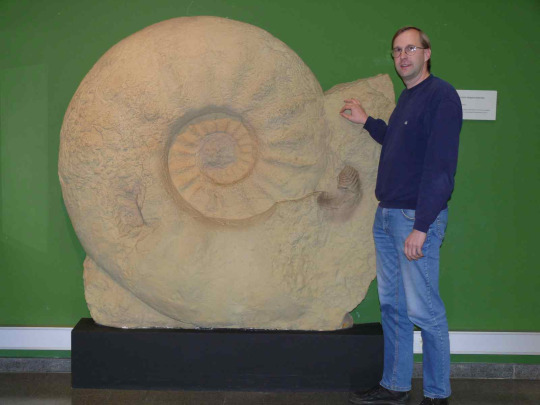
They are 1.8 m or 5.9 ft across and that that one wasn't even complete! The living chamber was missing a chunk so it's even bigger!
It lived during the Campanian Epoch of the Late Cretaceous Period in what is now Europe and North America where the Western Interior Seaway was located.
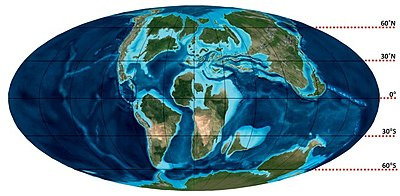
They were pelagic predators, probably feeding on fish,

squid,
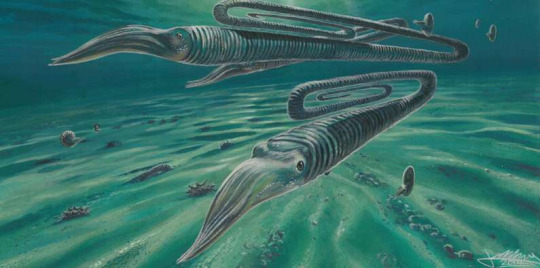
other ammonites,


and even marine reptiles if they could catch them
all while evading adult mosasaurs who definitely had them on the menu.
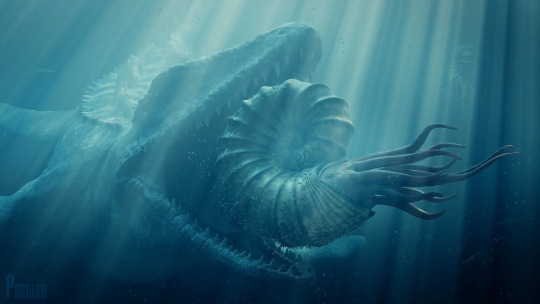
218 notes
·
View notes
Text
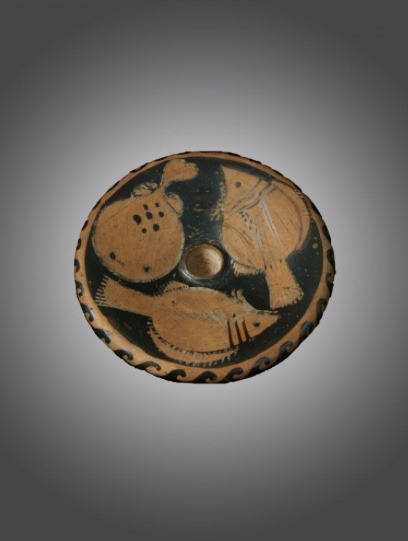
Campanian Red-Figure Fish Plate
360-330 BC
The Three-Stripe Painter.
Two breams and a torpedo around a central well.
ø 18.5 cm.
#Campanian Red-Figure Fish Plate#360-330 BC#pottery#ancient pottery#ancient artifacts#archeology#archeolgst#history#history news#ancient history#ancient culture#ancient civilizations#ancient greece#greek history#greek art
152 notes
·
View notes
Photo

Pellegrini's map of the languages of Italy, 1977.
via u/Normal_Kaleidoscope
There are a lot of maps around. One posted quite recently in this community. However, most of them contain incorrect information. This map was done by an actual linguist, yes it's old, but scientifically sound. Here's how to read it. Each color represents a group of mutually intelligible languages. It does not mean that one color corresponds to one language. Every town has its own languages, but they can be divided by mutual intelligibility and common features. More or less, it is like giving the same color to French, Spanish, Italian, Portuguese, and Romanian, because they are all Romance languages. Starting from the deep south:
violet is the area of extreme southern Italo-Romance. Sicilian, Southern Calabrian, and Salentino belong to this group.
pink is the area of continental southern Italo-Romance. Apulian, Campanian, Lucanian, Northern Calabrese, Molisano, Abruzzese, and Southern Marchigiano belong to this group.
light pink is central Italo-Romance. Laziale, Umbro, and Marchigiano belong to this group.
green is the area of Tuscan.
yellow is northern Italo-Romance. It's divided in yellow (Emiliano-Romagnolo, Ligure, Lumbard, Piedmontese) and light yellow (Veneto).
orange (north east) is Friulan.
light grey is Slovenian
dark grey is German varieties
coral (north west) is Franco-provençal
light brick orange is Sardinian
Within each area, you can see red lines (isoglosses). These lines constitute language borders. So for example, if you zoom in you'll see the isoglosses separating Piedmontese from Lumbard, Campania from Apulian, etc. As you can see, the map uses different terminology from the maps that you can usually find on the internet. Just to give an example, amateur -made maps describe Neapolitan as being spoken everywhere in continental southern Italy, while in fact this is not the case.
Tiny letters represent alloglot languages (Griko, Slavomolisan, Arbereshe, etc.)
You can find the original here. Enjoy!
162 notes
·
View notes
Text
Lythronax
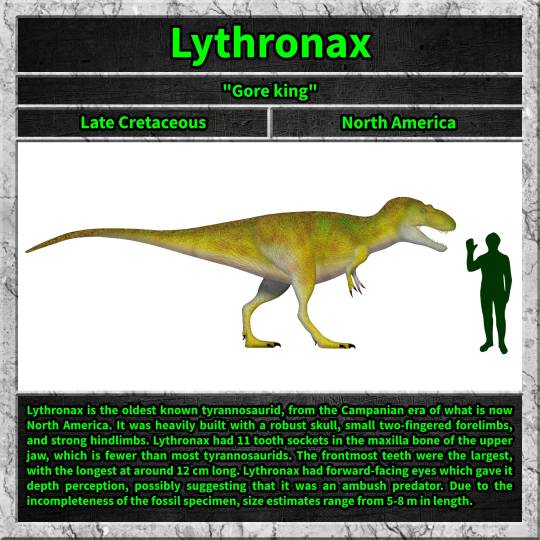
Lythronax is the oldest known tyrannosaurid, from the Campanian era of what is now North America. It was heavily built with a robust skull, small two-fingered forelimbs, and strong hindlimbs. Lythronax had 11 tooth sockets in the maxilla bone of the upper jaw, which is fewer than most tyrannosaurids. The frontmost teeth were the largest, with the longest at around 12 cm long. Lythronax had forward-facing eyes which gave it depth perception, possibly suggesting that it was an ambush predator. Due to the incompleteness of the fossil specimen, size estimates range from 5-8 m in length.
83 notes
·
View notes
Text
Prehistoric Planet Croc Ideas
So this was a thing I did on Twitter in anticipation of Prehistoric Planet. Obviously crocs (in this case meaning crocodylomorphs) were a pretty massive part of earth's fauna during the late Cretaceous, and seeing as the first season featured NONE I came to speculate which taxa could hypothetically make an appearance.
Now part of the challenge for myself was to come up with a new, interesting contender every day in anticipation of the show's release, each based around the confirmed episides we had and restricted purely to taxa from the Campanian and Maastrichtian. While it took a lot of energy, I did manage to do so. Hell, halfway through they dropped the reveal of Simosuchus, which I had saved for later.
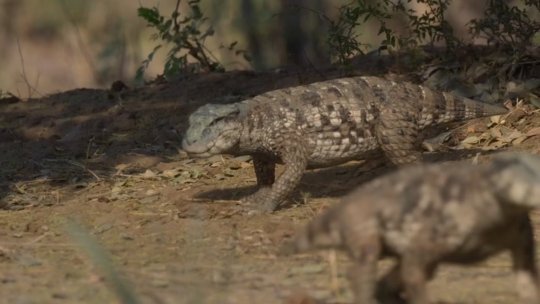
Obviously we didn't get much still, but I'll regardless post my list of candidates and ideas here, perhaps third time's the charme for a lot of these (tho for convenience I'm still ordering them by S2s episode titles). I'll also try to break them apart roughly by biome, starting with islands.
PS: I'd love to hear which crocs people would have loved to see themselves. Any on this list or stuff I didn't even mention? Let me know I'm curious.

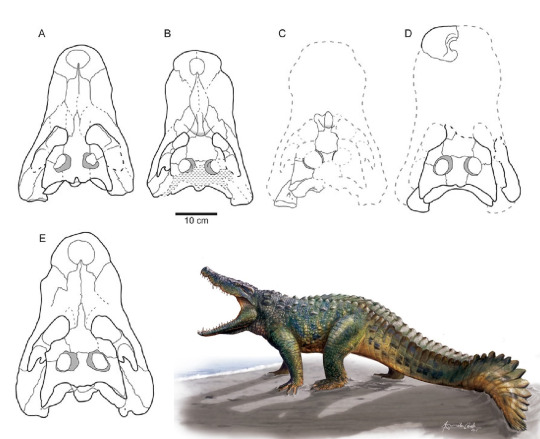

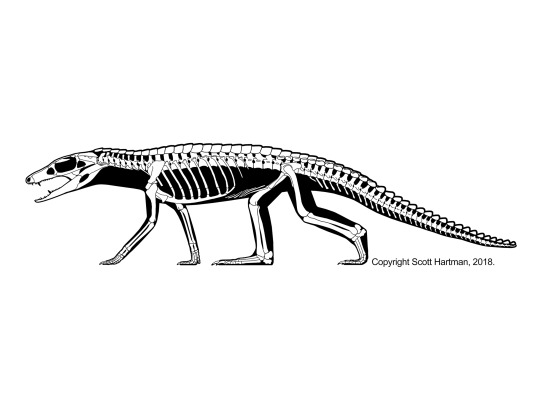

We got a shit ton of island crocs from the Cretaceous actually, which you can broadly divide into two categories.
The crocodiles of the European archipelago as seen in the top row.
Featuring the small, possibly shellfish eating Acynodon (art by Adramelech89), the incredibly widespread Allodaposuchus which did have some possibly semi-terrestrial forms (art by Alejandro Blanco, Aina and Agnès Amblás) and Aprosuchus, a tiny terrestrial critter from Hateg (art by @knuppitalism-with-ue). They already give a nice diversity between tiny durophages with blunt snouts, large, more traditional crocs and lanky land species.
The other island category concerns Madagascar, which had a lot of attention in season 2. Discounting Simosuchus, we got Araripesuchus tsangatsangana (art by Scott Hartman) and Mahajangasuchus (art by Mark Hallet). Both are really cool. The former is yet another smaller terrestrial species that may not actually be part of Araripesuchus, while the later is a massive, 4 meter relative of the famous Kaprosuchus that took to the water independently from all other crocs and has been nicknamed "Hippo croc" for its weird skull. Really I'd have loved to seen an episode entirely dedicated to this place.
Next up we had the badlands episode, which oh boy has a lot of contenders from the clade Notosuchia. Brace yourself.
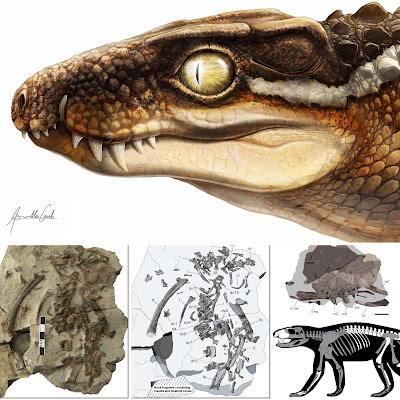


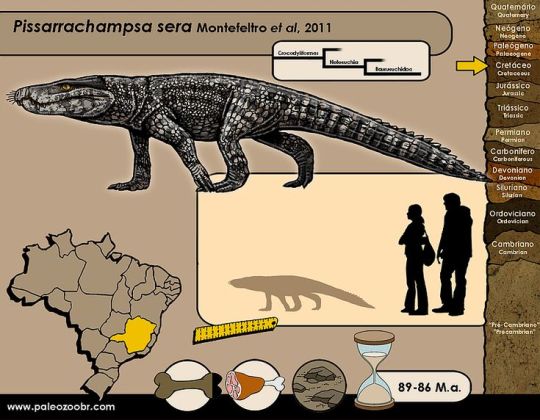


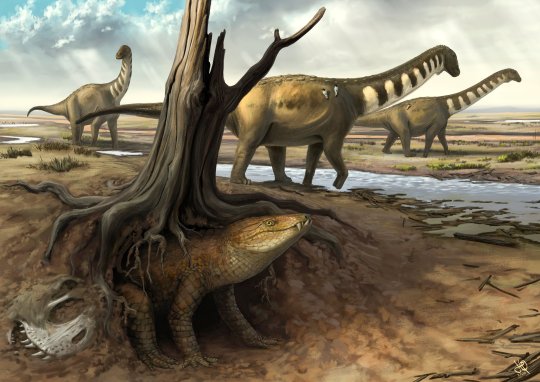

Here again I could split these in two categories.
The first is just general badland taxa. There's Ogresuchus for example, from Spain's Tremp Formation (art by Aina and Agnès Amblás). A relatively small sebecid found in a sauropod nesting site. And we all know what PhP does with baby sauropods. Or the long-necked Gobiosuchus (art by @yoofilos) from Mongolia, which may look like its related to the other ones in this category but actually is a far more ancient type of croc.
The far bigger group concerns South America's Notosuchians. ALL OF THESE are from the Bauru Group, with some even from the same single formation. You got Stratiotosuchus (again by Joschua Knüppe), a large terrestrial baurusuchid that filled the nische of mid sized carnivore in an environment shared by sauropods and abelisaurs. There's Pissarrachampsa (by Felipe Alves Elias), another baurusuchid I decided to feature because we have evidence of a nesting site that shows they only had few eggs. A great opportunity to show their tender side. Uberabasuchus (justin_an74), part of the bizzarly proportioned peirosaurids. Adamantinasuchus (by Deverson da Silva), a small, lanky Notosuchian and of course the heavily armored omnivore Armadillosuchus (by the ever talented Júlia d'Oliveira). Hell you could do a full episode just on the foodweb of the Bauru Group (Godoy et al. 2014).
Then there's swamps, which I'll just use to dump all the crocs that don't fit into the other categories.
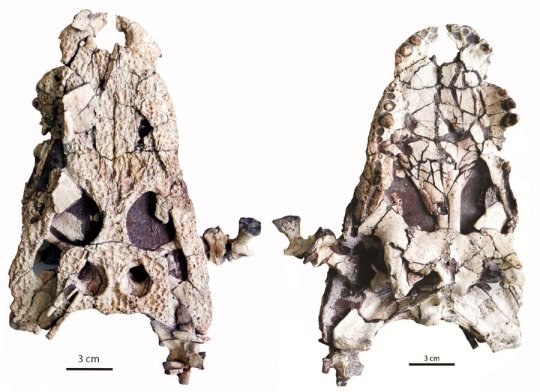


As you'd expect, freshwater would be ideal for crocs with a more traditional semi-aquatic lifestyle, here represented by three forms. Jiangxisuchus (image by Li et al. 2014) is a paralligatorid, which are tiny crocodilians from the Cretaceous and Paleogene of east Asia. We honestly don't know what they are, some say alligator relatives, others say they are closer to crocs. But its small and cute. Then there's Roxochampsa (artist of the model I couldn't find), which looks suspiciously crocodilian but is actually a relative of Uberabasuchus from the badlands, hell it appeared in the same formation. Still, I reasoned that I'd throw it into this category because I already proposed so much for badlands (none of which came true but hey). And then there's Denazinosuchus (art by Andrey Atuchin). Again it looks deceptively like a modern croc, but is actually the last remnant of the goniopholids, crocodyliforms that were prominent animals in the Jurassic and early Cretaceous. It could have brought both taxonomic diversity nad highlighted croc resilience till the end.
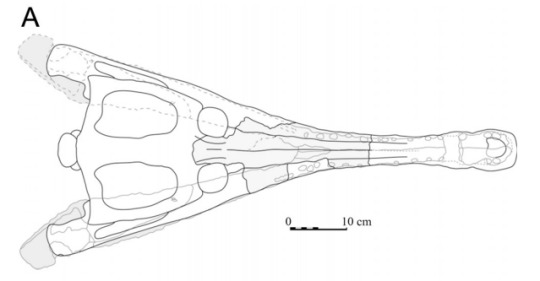

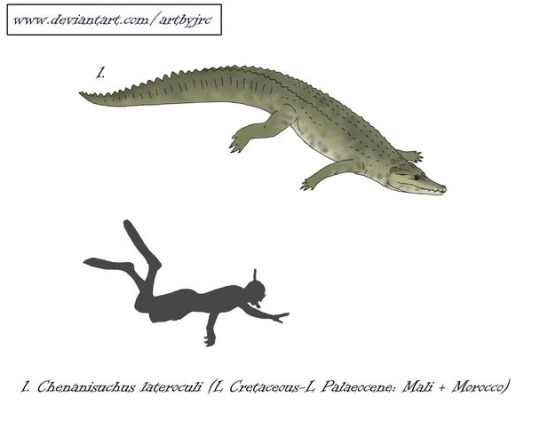
When it came to picking out crocs for Oceans, it got tricky. Obviously season 2 tried to differentiate itself by being set more in the open ocean, not the coast, and true pelagic crocodiles weren't around by the end of the Cretaceous. So I had to settle for coastal animals. There's Sabinosuchus (Schiller II et al. 2016), a cousin to Sarcosuchus and, like Denazinosuchus, one of the last of its lineage. Also its from Mexico which is rarely talked about for its fossils. Rhabdognathus (Ghedoghedo) is a distant cousin, a slender snouted dyrosaur. Unlike pholidosaurs, dyrosaurs actually did really well after the KPG impact and spread around a lot, living way into the Eocene. And finally Chenanisuchus (art by artbyjrc), which like Rhabdognathus was found both before and after the impact that killed the dinosaurs.

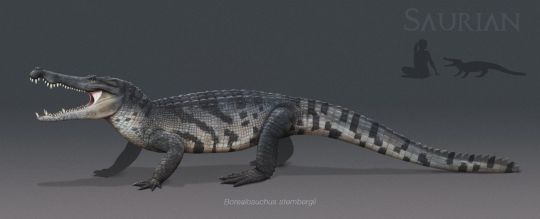
And the final two I shall talk about, both of which I thought/hoped would appear in the North America episode. Again, there's certainly overlap, both would have just as much fit into swamps, while many others would have also suited North America. Regardless, here's Brachychampsa (Tom Parker) and Borealosuchus (Chris Masna), both iconic animals from the Hell Creek Formation. One closely allied with alligators and caimans, the other more basal with a head-shape more similar to todays crocodiles.
Now obviously there'd have been a lot more. Part of the challenge to myself was to try and be as diverse as possible, rather than just listing 10 different baurusuchids I went with only two, tried to include as much of the world as possible, etc.... There's also the fact that some really awesome taxa, Titanochampsa, Brachiosuchus and Eurycephalosuchus, all incredibly unique or interesting, were published too late to have been considered for the show.
And now, in hinsight, we obviously know that with the exception of Simosuchus none of them made it in. Which is a shame, but maybe next time.
#prehistory#palaeblr#crocodile#paleontology#long post#prehistoric planet#prehistoric planet 2#borealosuchus#brachychampsa#simosuchus#pissarrachampsa#stratiotosuchus#gobiosuchus#ogresuchus#uberabasuchus#roxochampsa#armadillosuchus#adamantinasuchus#jiangxisuchus#denazinosuchus#sabinosuchus#rhabdognathus#chenanisuchus#mahajangasuchus#araripesuchus#acynodon#allodaposuchus#aprosuchus
157 notes
·
View notes